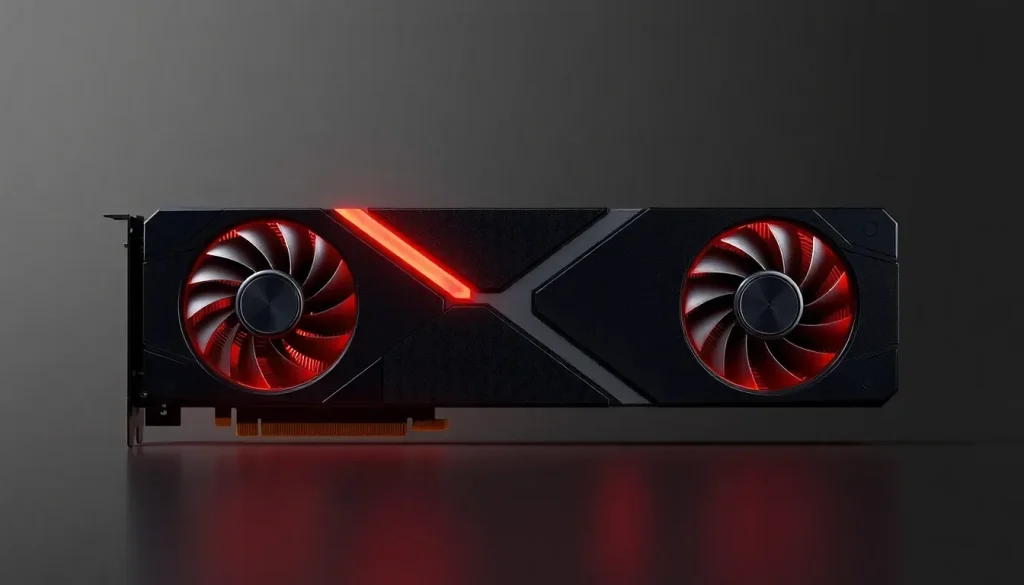AMD RDNA 1 and 2 GPU Drivers Shift to Maintenance Mode

In a rapidly evolving landscape of graphics processing technologies, AMD has made a significant announcement that has sent ripples through the gaming community. The company revealed that it will discontinue game optimizations and feature updates for its first and second-generation RDNA graphics cards, leading many to question the longevity and support of their investments in AMD hardware.
This decision marks a pivotal moment for users of the Radeon RX 5000 and RX 6000 series, prompting discussions about the future of these GPUs and the implications for gamers relying on AMD's ecosystem.
- AMD confirms the end of game optimization and feature updates for Radeon RX 5000 and RX 6000 series
- Implications for RX 5000 and RX 6000 series users
- AMD drivers and the future of graphics technologies
- RDNA architecture explained: A look at the generations
- Consumer reactions and community feedback
- Looking ahead: What’s next for AMD and its users?
AMD confirms the end of game optimization and feature updates for Radeon RX 5000 and RX 6000 series
AMD's first RDNA GPU series, the Radeon RX 5000, launched in 2019, and the RX 6000 series, which followed in 2020, were anticipated to be supported with ongoing updates and optimizations. However, according to AMD's latest communications, both GPU families will transition into a maintenance mode that emphasizes critical updates only.
In a recent update regarding the Adrenalin Edition 25.10.2 driver, it was evident that the new features primarily cater to the latest RDNA 3 and RDNA 4 series, with no mention of enhancements for the earlier generations. This shift indicates a clear strategy from AMD to focus resources on newer architectures.
The statement from AMD reveals:
“RDNA 1 and RDNA 2 graphics cards will continue to receive driver updates for critical security fixes and bug resolutions. To focus on optimizing and delivering new and improved technologies for its latest GPUs, AMD is placing the Radeon RX 5000 and RX 6000 series into maintenance mode.”
This transition is particularly striking considering the RX 6000 series has several models that were introduced as recently as 2023, such as the RX 6750 GRE. As a result, users who invested in these newer models are left feeling slighted, knowing that their GPUs will not benefit from the latest performance improvements or optimizations.
Implications for RX 5000 and RX 6000 series users
The decision to limit support for these two GPU families raises several important questions for consumers:
- Longevity of Hardware: How long can users expect stable performance and security updates for their GPUs?
- Market Trust: Will AMD's current user base trust the company to provide adequate support for future GPUs?
- Performance Expectations: Will users experience performance degradation in newer games as support wanes?
Moreover, this announcement places AMD's commitment to its customers under scrutiny. While NVIDIA has maintained support for its older Maxwell and Pascal architectures for nearly a decade, AMD seems to be shifting its strategy towards a more aggressive cycle of hardware support that prioritizes new products over legacy systems. This could have long-term repercussions as consumers balance the benefits of buying AMD products with the risk of short-lived support.
AMD drivers and the future of graphics technologies
As AMD pivots towards RDNA 3 and RDNA 4, it is essential to consider what this means for the drivers and software that support these graphics cards. The Adrenalin 25.10.2 update highlights AMD's commitment to enhancing performance and compatibility for its newest offerings, but it also signals a potential neglect for those who have supported the brand through their previous models.
The focus on the latest generations means that:
- Future driver updates will primarily target RDNA 3 and RDNA 4 architectures.
- Users of the RX 5000 and RX 6000 series can expect only critical updates, limiting their gaming experience with newer titles.
- AMD is positioning itself to innovate rapidly, potentially at the cost of its existing customer base.
This strategy could pay off in terms of attracting new customers, particularly those looking for cutting-edge performance. However, it risks alienating loyal users who have invested in AMD’s technology.
RDNA architecture explained: A look at the generations
To understand the context of AMD's recent decision, it's helpful to review the RDNA architecture's evolution:
| Architecture | Generation | Launch Year | Key Features |
|---|---|---|---|
| RDNA 1 | Radeon RX 5000 | 2019 | Improved performance per watt, support for DirectX 12 |
| RDNA 2 | Radeon RX 6000 | 2020 | Hardware support for ray tracing, Infinity Cache |
| RDNA 3 | Radeon RX 7000 | 2022 | Enhanced ray tracing, improved AI capabilities |
| RDNA 4 | Upcoming | Expected 2024 | Next-gen performance leaps, further AI integration |
Consumer reactions and community feedback
The gaming community has not remained silent in response to AMD's announcement. Many users have taken to forums and social media to express their disappointment, citing a feeling of betrayal from a company they once trusted. The general sentiment reflects a concern that AMD is prioritizing new sales over the satisfaction of existing customers.
As discussions unfold, several threads on platforms like Reddit have garnered attention:
These discussions echo a broader concern about the sustainability of investing in AMD products and the long-term viability of their support strategy. The community is left to ponder whether AMD's shift in focus will yield the promised advancements or if it will leave a trail of unsatisfied customers in its wake.
Looking ahead: What’s next for AMD and its users?
As AMD advances with RDNA 3 and RDNA 4, the future appears bright for those investing in the latest technology. However, the company's recent decision to limit support for previous generations raises critical questions about the lifecycle of its products.
For current users of the RX 5000 and RX 6000 series, the emphasis will now be on ensuring their hardware remains viable for as long as possible, while weighing the potential benefits of upgrading to newer models. The industry is watching closely to see how AMD navigates this transition and what it means for the competitive landscape against rivals like NVIDIA.
For a deeper dive into the community's sentiments and reactions, check out this video discussing AMD's recent strategic shift:




Leave a Reply